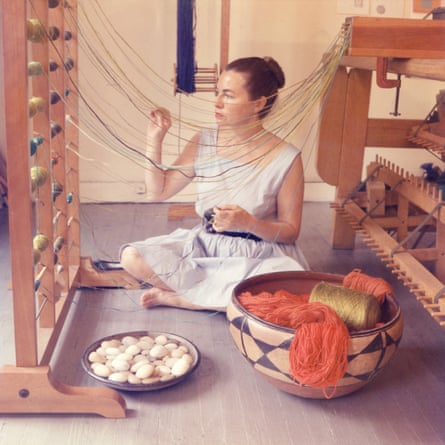The cover of Prudence Peiffer’s new book, The Slip, features the kind of photograph New York City dreams are made of. In the 1958 shot, taken by Hans Namuth, a bohemian-looking group – many of whom would later become giants of American art – smoke and sip coffee on a Manhattan roof, a greyscale higgle-piggle of apartment blocks and art nouveau buildings as their backdrop. They include Ellsworth Kelly, Agnes Martin, Robert Indiana and Jack Youngerman, along with Delphine Seyrig, the Lebanese-French actor, and Seyrig and Youngerman’s blond toddler son, Duncan.
The photograph was taken on the roof of 3–5 Coenties Slip, a warehouse in a small street in Manhattan’s Financial District. Artists lived in the Slip for just over a decade, from the late 1950s to the late 1960s, very cheaply and in most cases illegally, in warehouses that had once served the maritime industry. During that time, Peiffer argues, the work they produced changed American art for ever.
Peiffer – an art critic, historian, and director of content at New York’s Museum of Modern Art – started researching the Slip in 2016, after seeing a photograph of Robert Indiana and Ellsworth Kelly riding bikes together in the area. “It sparked a moment of: what were they doing down here? It was sort of an uncanny pairing,” she says.
Coenties Slip runs between Pearl Street – one of the first Manhattan streets to be built by Dutch settlers – and Water Street, which was the waterfront until lower Manhattan was expanded using landfill. It was originally an inlet for boats, a bustling port and marketplace when New York was a maritime trading hub. Herman Melville wrote about Coenties Slip in Moby Dick, which came out in 1852, describing it as somewhere where “thousands of mortal men” are “fixed in ocean reveries”.
During almost seven years of research, Peiffer discovered that artists had moved to the Slip in its postwar decline, convening at a pivotal moment in their careers. The community, which also included Lenore Tawney and the pop artist James Rosenquist, were varied in age, from 24 to 50, but at similarly early career stages, lured by space and cheap rent. Peiffer’s research, which included interviews with Youngerman, who died in February 2020, and access to letters and journals, told a first-hand story of “what makes people want to make something, to really devote their life to something that’s so uncertain?”
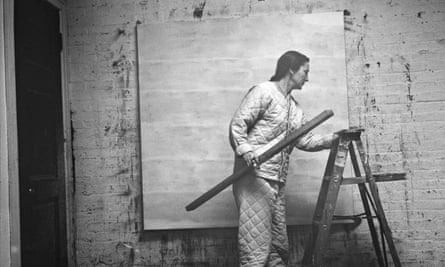
Many of the artists had major breakthroughs at the Slip. They were spurred on by the community around them, from “little moments of support: paying someone’s gas bill, introducing someone to their gallerist, taking someone to a doctor – to competition, which could also be fruitful. Robert Indiana’s watershed moment of bringing language into his work, for example, was in part conceived as “a little bit of an F-you to Ellsworth Kelly” and partially inspired by the building he lived in, which had writing on the side. (His colourful, stacked LOVE sculpture would later become one of pop art’s most recognisable images.)
In her own mythmaking, says Peiffer, “Agnes Martin said that it was in the Slip that she really started making the paintings she wanted to make,” after 20 years of work as an artist. It was also during that time that Martin became embedded with the gallerist Betty Parsons, a peripheral figure at the Slip who was a “huge help” for Martin. That Martin could network but also have a lot of time and space alone to work was indicative of the Slip’s special situation. “Youngerman didn’t realise, I think, fully until he had moved here just how apart from the city it was, even though it was still obviously within it,” says Peiffer.
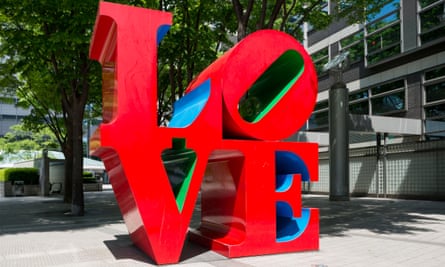
The buildings, and their waterside location, were frequently inspiring, but not easy to live in. “They were very raw. It was definitely DIY,” says Peiffer. Artists used pallets from the nearby Fish Market to try to heat the large warehouses, which were often freezing, turning the air pungent. The artist Anne Wilson talked about showering using a dishwashing basin with a hose; most of them went to the nearby Seamen’s Church Institute for hot food and hot showers.
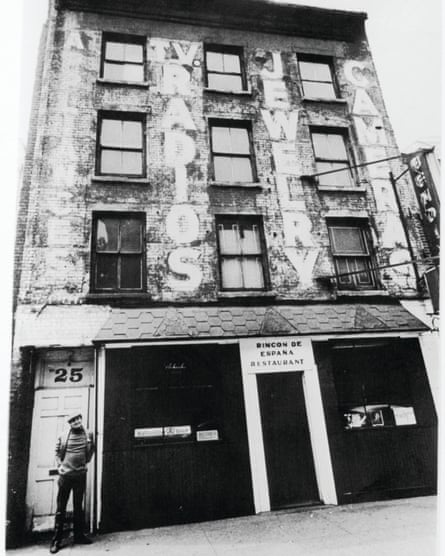
There was space to grow plants. It was at the Slip that Kelly started to do his exquisite plant drawings daily and show them to his friends. “And that was in part because he could go up on the roof and grow plants,” says Peiffer. “All of the artists grew plants – there are beautiful photos of these little clusters of rubber plants and avocado plants.” This was the first time avocados were on trend among white urbanites. “There is an amazing letter that Delphine writes to her mother in Beirut where she says, ‘I’ve come across this new dish. You make it with avocados – it’s kind of like hummus. They call it guacamole.’ So everyone took their avocado pits and made new plants which they all had in their studios,” says Peiffer.
As more artists started to move in, there were “a lot of complaints by the sailors that they found it dangerous and desolate at night”, says Peiffer. Much of the area had already been slated for demolition, as the economy moved from industry to commerce, and developers including Robert Moses and David Rockefeller sought to build upwards to accommodate financial institutions. The artists were “surrounded by rubble on all sides”, says Peiffer. “It was a time of very intense development.”
Eventually the artists were evicted and most of the buildings were destroyed. Had timing been on their side, things might have been different: soon after they left, artist-in-residence zoning amendments made it possible for artists to live legally in commercial loft buildings in SoHo and Tribeca, a location and era that also spawned a more openly commercial New York art scene.
Now, with affordable housing in vanishingly short supply, “when you kind of look at heat maps of where people who identify as artists are living now in New York, it is much more pushed out to the boroughs”, says Peiffer. “And that’s great. I don’t believe that New York is dead. But it’s true that there is a bit of a vacuum of that kind of spirit, directly, in these neighbourhoods.”
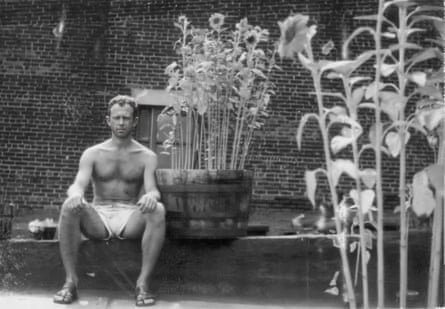
Still, she is optimistic: “I’m always amazed how creative artists can be in terms of making things work,” she says, and hopes that the excess of office space, much reported since the work-from-home boom, may represent an opportunity for artists. She tells me about a gallery called Parent Company which has recently popped up between two high rises inside a shipping container in downtown Brooklyn. “It’s totally ephemeral. I’m sure that lot will be developed very soon. But it’s just the spirit of still finding that space, literally in between, in the midst of development.”
At the end of our interview, which takes place in a cafe around the corner from the Slip, Peiffer walks me to the only remaining building, the same one the artists were photographed on: 3 – 5 Coenties Slip, where both Ellsworth Kelly and Agnes Martin once lived. The rest of the street would be unrecognisable to them: high-rise concrete office blocks, the neon signs of a dim sum restaurant, the inevitable CBD dispensary. Once, the artists would have had an uninterrupted view of the river. Now, between buildings, we can only see a chunk of the glittering water where tugboats chug and helicopters land. And we can barely hear each other talk, for all the drilling and vibrating, as roads around us are dug up, more change always coming.

